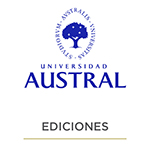Los límites de la causalidad probabilística en derecho
DOI:
https://doi.org/10.26422/RJA.2021.0202.cofPalabras clave:
causalidad, responsabilidad, causalidad probabilística, derecho de responsabilidad civil, eficienciaResumen
El criterio que se debe utilizar para evaluar causalidad continúa siendo controvertido. El análisis económico del derecho propone el uso de la causalidad probabilística como criterio rector, lo cual sugiere la eliminación de criterios de causalidad binarios. Esto lleva a explicaciones que violan nuestras intuiciones, que no explican la toma de decisiones judicial y que se consideran injustas. Este artículo propone que ni la causalidad binaria ni la probabilística pueden brindar una respuesta satisfactoria para todos los supuestos. La causalidad probabilística funciona para los enunciados causales generales (tipos de enunciados en los que está involucrada la formulación de reglas), mientras que los criterios binarios funcionan mejor para los enunciados causales singulares (tipos de enunciados que generalmente abordan los tribunales).
Descargas
Referencias
Alexander, L. A. (1987). Causation and Corrective Justice. Does Tort Law Make Sense? Law and Philosophy, 6(1), 1-23.
Beale, J. (1920). The Proximate Consequence of an Act. Harvard Law Review, 33(5), 633-658.
Becht, A. C. y Miller, F. W. (1961). The Test of Factual Causation in Negligence and Strict Liability Cases. Washington University Studies.
Ben-Shahar, O. (2000). Causation and Foreseeability. En Bouckaer, B. y De Geest, G. (Eds.), Encyclopedia of Law and Economics. Edward Elgar.
Bentata, P. (2013). Environmental Regulation and Civil Liability Under Causal Uncertainty: An Empirical Study of the French Legal System. Review of Law & Economics, 9(2): 239-263.
Borgo, J. (1979). Causal Paradigms in Tort Law. Journal of Legal Studies, 8(3), 419-455.
Brown, J. (1973). Toward an Economic Theory of Liability. Journal of Legal Studies, 2(2), 323-349.
Bunge, M. (1973). A Probabilistic Theory of Causality by P. Suppes. The British Journal of Philosophy of Science, 24(4), 409-410.
Bunge, M. (2009). Causality and Modern Science (4a ed.). Transaction Publishers.
Burrows, P. (1999). A Deferential Role for Efficiency Theory in Analysing Causation-Based Tort Law. European Journal of Law and Economics, 8, 29-49.
Calabresi, G. (1970). The Costs of Accidents. A Legal and Economic Analysis. Yale University Press.
Calabresi, G. (1975). Concerning Cause and the Law of Torts: An Essay for Harry Kalven, Jr. The University of Chicago Law Review, 43(1), 69-108.
Cartwright, N. (1979). Causal Laws and Effective Strategies. Nous, 13, 419-437.
Coase, R. (1960). The Problem of Social Cost. Journal of Law and Economics, 3, 1-44.
Coderch, P. S. y Fernández Crende, A. (2006). Causalidad y Responsabilidad. InDret, (artículo 329).
Coleman, J. L. (1992). Risks and Wrongs. Cambridge University Press.
Cooter, R. (1987). Torts as the Union of Liberty and Efficiency: An Essay on Causation. Chicago-Kent Law Review, 63, 523-552.
Dewees, D., Duff, D. y Trebilcock, M. (1996). Exploring the Domain of Accident Law. Oxford University Press.
Dworkin, R. (1977). Taking Rights Seriously. Harvard University Press.
Edgerton, H. W. (1924). Legal Cause. University of Pennsylvania Law Review, 72, 211-243.
Eells, E. (1991). Probabilistic Causality. Cambridge University Press.
Epstein, R. A. (1973). A Theory of Strict Liability. Journal of Legal Studies, 2, 151-204.
Epstein, R. A. (1974). Defenses and Subsequent Pleas in a Theory of Strict Liability. Journal of Legal Studies, 3, 185-201.
Epstein, R. A. (1987). Causation-in Context: An Afterword. Chicago-Kent Law Review, 63, 653-682.
Fumerton, R. y Kress, K. (2001). Causation and the Law: Preemption, Lawful Sufficiency, and Causal Sufficiency. Law & Contemporary Problems, 64(4), 83-105.
Geistfeld, M. (2006). The Doctrinal Unity of Alternative Liability and Market-Share Liability. University of Pennsylvania Law Review, 155, 447-501.
Gold, S. (1986). Causation in Toxic Torts: Burdens of Proof, Standards of Persuasion, and Statistical Evidence. Yale Law Journal, 96(2), 376-402.
Good, I. J. (1961a). A Causal Calculus I. British Journal for the Philosophy of Science, 11(44), 305-318.
Good, I. J. (1961b). A Causal Calculus II. British Journal for the Philosophy of Science, 12(45), 43-51.
Granger, C. (1987). Causal Inference. En Eatwell, J., Milgate, M. y Newman, P. (Eds.), The New Palgrave: A Dictionary of Economics. The McMillan Press Limited.
Green, L. (1929). Are There Dependable Rules of Causation? University of Pennsylvania Law Review and American Law Register, 77(5), 601-628.
Hart, H. L. A. y Honoré, T. (1985). Causation in the Law (2a ed.). Oxford Clarendon Press.
Hausman, D. M. (2009). Laws, Causation and Economic Methodology. En Kincaid, H. y Ross, D. (Eds.), The Oxford Handbook of Philosophy of Economics. Oxford University Press.
Hellner, J. (2000). Causality and Causation in Law. Scandinavian Studies in Law, 40, 111-134.
Hitchcock, C. (1995). The Mishap at Reichenbach Fall: Singular Vs. General Causation. Philosophical Studies, 78, 257-291.
Hitchcock, C. (2010). Probabilistic Causation. En Zalta, E. N. (Ed.), The Stanford Encyclopedia of Philosophy. http://plato.stanford.edu/archives/win2011/entries/causation- probabilistic.
Holland, P. W. (1986). Statistics and Causal Inference. Journal of the American Statistical Association, 81(396), 945-960.
Honoré, T. (1983). Causation and Remoteness of Damages. En Tunc, A, (Ed.), International Encyclopedia of Comparative Law (Vol. XI: 1).
Kahan, M. (1989). Causation and Incentives to Take Care Under the Negligence Rule. Journal of Legal Studies, 18, 427-447.
Kaye, D. (1982). The Limits of the Preponderance of the Evidence Standard: Justifiably Naked Statistical Evidence and Multiple Causation. American Bar Foundation Research Journal, 7(2), 487-516.
Kaye, D. y Aickin, M. (1984). A Comment on Causal Apportionment. Journal of Legal Studies, 13, 191-208.
Kelman, M. (1987). The Necessary Myth of Objective Causation Judgments in Liberal Political Theory. Chicago-Kent Law Review, (63), 579-638.
King, J. H. (1981). Causation, Valuation, and Chance in Personal Injury Torts Involving Preexisting Conditions and Future Consequences. Yale Law Journal, 90, 1376-1396.
Krecke, E. (1996). The Nihilism of the Economic Analysis of Law. Journal Des Economistes Et Des Etudes Humaines, 3, 19-37.
Kruskal, W. (1986). Terms of Reference: Singular Confusion About Multiple Causation. Journal of Legal Studies, 15(2), 427-436.
Landes, W. M. y Posner, R. A. (1981). The Positive Economic Theory of Tort Law. Georgia Law Review, 15, 851-924.
Landes, W. M. y Posner, R. A. (1983). Causation in Tort Law: An Economic Approach. Journal of Legal Studies, 12, 109-134.
Landes, W. M. y Posner, R. A. (1987). The Economic Structure of Tort Law. Harvard University Press.
Levmore, S. (1990). Probabilistic Recoveries, Restitution, and Recurring Wrongs. Journal of Legal Studies, 19, 691-726.
Lewis, D. (1973). Causation. Journal of Philosophy, 70, 556-567.
Lewis, D. (2000). Causation as Influence. Journal of Philosophy, 97, 182-197.
Lipton, P. (1992). Causation Outside the Law. En Gross, H. y Harrison, R. (Eds.), Jurisprudence: Cambridge Essays (pp. 127-148). Oxford University Press.
Mackie, J. L. (1965). Causes and Conditions. American Philosophical Quarterly, 2(4), 245-264.
Mackie, J. L. (1974). The Cement of the Universe: A Study of Causation. Oxford Clarendon Press.
Malone, W. S. (1956). Ruminations on Cause-in Fact. Stanford Law Review, 9(1), 60-69.
Marino, A. M. (1991). Market Share Liability and Economic Efficiency. Southern Economic Journal, 57(3), 667-675.
McCloskey, D. (2005). The Trouble with Mathematics and Statistics in Economics. History of Economic Ideas, 13(3), 85-102.
McLaughlin, J. A. (1925). Proximate Cause. Harvard Law Review, 39(2), 149-199.
Menzies, P. (1996). Probabilistic Causation and the Pre-Emption Problem. Mind. New Series, 105(417), 85-117.
Miceli, T. J. (1996). Cause in Fact, Proximate Cause, and the Hand Rule: Extending Grady’s Positive Economic Theory of Negligence. International Review of Law and Economics, 16(4), 473-482.
Miceli, T. J. y Segerson, K. (2007). Punishing the Innocent Along with the Guilty: The Economics of Individual Versus Group Punishment. Journal of Legal Studies, 36(1), 81-106.
Moore, M. (1985). Causation and the Excuses. California Law Review, 73(4), 1091-1149.
Moore, M. (1987). Thomson’s Preliminaries About Causation and Rights. Chicago-Kent Law Review, 63, 497-521.
Moore, M. (2000). The Metaphysics of Causal Intervention. California Law Review, 88(3), 827-877.
Moore, M. (2009). Causation and Responsibility: An Essay in Law, Morals and Metaphysics. Oxford University Press.
Otte, R. (1981). A Critique of Suppes’ Theory of Probabilistic Causality. Synthese, 48(2), 167-189.
Papineau, D. (1985). Probabilities and Causes. Journal of Philosophy, 82(2), 57-74.
Parascandola, M. (1996). Evidence and Association: Epistemic Confusion in Toxic Tort Law. Philosophy of Science, 63, 168-176.
Perry, S. R. (1992). The Moral Foundations of Tort Law. Iowa Law Review, 77, 449-514.
Polinsky, A. M. y Shavell, S. (2000). The Fairness of Sanctions: Some Implications for Optimal Enforcement Policy. American Law and Economics Review, 2, 223-237.
Posner, R. A. (1981). The Concept of Corrective Justice in Recent Theories of Tort Law. Journal of Legal Studies, 10(1), 187-206.
Posner, R. A. (1986). Economic Analysis of Law. Little, Brown & Company.
Rizzo, M. J. (1987). Foreword: Fundamentals of Causation. Chicago-Kent Law Review, 63, 397-406.
Rizzo, M. J. (1996). The Genetic-Causal Tradition and Modern Economic Theory. Kyklos, 49(3), 273-317.
Rizzo, M. J. y Arnold, F. S. (1980). Causal Apportionment in Tort Law: An Economic Theory. Columbia Law Review, 85, 1399-1429.
Rizzo, M. J. y Arnold, F. S. (1986). Causal Apportionment: Reply to the Critics. Journal of Legal Studies, 15, 219-226.
Robertson, D. W. (1997). The Common Sense of Cause in Fact. Texas Law Review, 75, 1765-1800.
Robinson, G. O. (1982). Multiple Causation in Tort Law: Reflections on the DES Cases. Virginia Law Review, 68(4), 713-770.
Robinson, G. O. (1985). Probabilistic Causality and Compensation for Tortious Risk. Journal of Legal Studies, 14, 779-798.
Rosenberg, D. (1984). The Causal Connection in Mass Exposure Cases: A “Public Law” Vision of the Tort System. Harvard Law Review, 97, 849-929.
Russell, G. (2008). Truth in Virtue of Meaning: A Defense oftheAnalytic/Synthetic Distinction. Oxford University Press.
Salmon, W. C (1980). Probabilistic Causality. Pacific Philosophical Quarterly, 61, 50-74.
Sanders, J., Kugler, M. B., Darley, J. M. y Solan, L. M. (2014). Must Torts Be Wrongs? An Empirical Perspective. Wake Forest Law Review, 49, 1-235.
Schaffer, J. (2000). Overlappings: Probability-Raising Without Causation. Australasian Journal of Philosophy, 78(1), 40-46.
Schaffer, J. (2004). Causes Need Not Be Physically Connected to Their Effects: The Case for Negative Causation. En Hitchcock, C. (Ed.), Contemporary Debates in Philosophy of Science (pp. 197-216). Blackwell.
Schultz, M. (2001). Further Ruminations on Cause-in-Fact. Scandinavian Studies in Law, 41, 467-501.
Schwartz, A. (1987). Causation in Private Tort Law: A Comment on Kelman. Chicago-Kent Law Review, 63, 639-652.
Shavell, S. (1980). An Analysis of Causation and the Scope of Liability in the Law of Torts. Journal of Legal Studies, 9, 463-516.
Shavell, S. (1985). Uncertainty Over Causation and the Determination of Civil Liability. Journal of Law and Economics, 28, 587-609.
Shavell, S. (1998). Causation and Tort Liability. En Newman, P. (Ed.), The New Palgrave Dictionary of Economics and the Law. McMillan Reference Limited.
Shavell, S. (2004). Foundations of Economic Analysis of Law. The Belknap Press of Harvard University Press.
Singh, R. (2002). Causation, Economic Efficiency and the Law of Torts. Centre for Development Economics (working paper No. 102).
Singh, R. (2007). ‘Causation-Consistent’ Liability, Economic Efficiency and the Law of Torts. International Review of Law and Economics, 27, 179-203.
Skyrms, B. (1980). Causal Necessity. Yale University Press.
Smith, J. (1911). Legal Cause in Actions of Tort. Harvard Law Review, 25, 303-327.
Sober, E. (1985). Two Concepts of Cause. En Asquith, P. y Kitcher, P. (Ed.), PSA 1984 (Vol. II, pp. 405-424). Philosophy of Science Association.
Spector, H. (2011). The MMTS Analysis of Causation. En Goldberg, R. (Ed.), Perspectives on Causation. Hart Publishing.
Stapleton, J. (2008). Choosing What We Mean with “Causation” in the Law. Missouri Law Review, 73(2), 433-480.
Suppes, P. (1970). A Probabilistic Theory of Causality. North-Holland Publishing.
Terry, H. T. (1915). Proximate Consequences in the Law of Torts. Harvard Law Review, 28(1), 10-33.
Thomson, J. J. (1984). Remarks on Causation and Liability. Philosophy & Public Affairs, 13(101), 127-133.
Thomson, J. J. (1987a). Causality and Rights: Some Preliminaries. Chicago-Kent Law Review, 63, 471-496.
Thomson, J. J. (1987b). The Decline of Cause. Georgetown Law Review, 76, 137-150.
Van Wijck, P. V. y Winters, J. K. (2001). The Principle of Full Compensation in Tort Law. European Journal of Law and Economics, 11(3), 319-332.
Von Wright, G. H. (1971). Explanation and Understanding. Cornell University Press.
Von Wright, G. H. (1975). Causality and Determinism. Columbia University Press.
Weinrib, E. J. (1983). Toward a Moral Theory of Negligence Law. Law & Philosophy, 2, 37-48.
Weinrib, E. J. (1992). Corrective Justice. Iowa Law Review, 77, 403-425.
Woodward, J. (1984). A Theory of Singular Causal Explanation. Erkenntnis, 21, 231-262.
Woodward, J. (2003). Making Things Happen: A Theory of Causal Explanation. Oxford University Press.
Wright, R. W. (1985a). Actual Causation Vs. Probabilistic Linkage: The Bane of Economic Analysis. Journal of Legal Studies, 14, 435-456.
Wright, R. W. (1985b). Causation in Tort Law. California Law Review, 73, 1735.
Wright, R. W. (1987). The Efficient Theory of Causation and Responsibility: Unscientific Formalism and False Semantics. Chicago-Kent Law Review, 63, 553-578.
Wright, R. W. (1988). Causation, Responsibility, Risk, Probability, Naked Statistics, and Proof: Pruning the Bramble Bush by Clarifying the Concepts. Iowa Law Review, 73, 1001-1077.
Wright, R. W. (1992). Substantive Corrective Justice. Iowa Law Review, 77, 625-711.
Wright, R. W. (1995). The Standard of Care in Negligence Law. En Owen, D. (Ed.), Philosophical Foundations of Tort Law. Oxford Clarendon Press.
Wright, R. W. (2008). Liability for Possible Wrongs: Causation, Statistical Probability and the Burden of Proof. Loyola of Los Angeles Law Review, 41, 1295-1344.
Wright, R. W. (2011). Proving Causation: Probability Vs. Belief. En Goldberg, R. (Ed.), Perspectives on Causation. Hart Publishing.
Yablo, S. (2002). De Facto Dependence. Journal of Philosophy, 99(3), 130-148.
Young, R., Faure, M. y Fenn, P. (2004). Causality and Causation in Tort Law. International Review of Law and Economics, 24, 507-523.
Publicado
Número
Sección
Licencia
Esta licencia permite copiar, distribuir, exhibir y representar la obra siempre y cuando se reconozca la autoría y se cite la obra de la forma adecuada. No se permite el uso comercial de la obra original ni la generación de obras derivadas.
Los autores garantizan a la Revista Jurídica Austral el derecho de ser la primera publicación del trabajo.













































